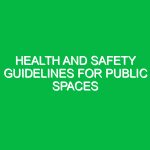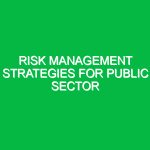In the dynamic and demanding field of healthcare, the safety of healthcare workers is paramount. The term “Safety Measures for Healthcare Workers” encompasses a variety of protocols, practices, and regulations designed to protect medical staff from occupational hazards. These measures are not only essential for maintaining the well-being of healthcare professionals but also for ensuring the quality of care provided to patients. The Health, Safety, and Environment (HSE) domain plays a critical role in establishing a secure work environment, reducing risks, and promoting a culture of safety within healthcare facilities.
Understanding the Risks: Potential Hazards in Healthcare Settings
Healthcare workers are exposed to a myriad of hazards that can affect their health and safety. Understanding these risks is the first step in implementing effective safety measures. Below are some key hazards associated with healthcare work:
1. Biological Hazards
Healthcare workers are often on the front lines of exposure to infectious diseases. From bloodborne pathogens such as HIV and Hepatitis B to airborne viruses like influenza and COVID-19, the risk of infection is significant. For instance, a nurse may inadvertently come into contact with contaminated needles or other sharp instruments if proper protocols are not followed. According to the World Health Organization, healthcare workers are three times more likely to be exposed to these pathogens than the general population.
2. Chemical Hazards
In healthcare settings, chemicals are used for cleaning, disinfecting, and treating patients. Exposure to hazardous chemicals, such as anesthetic gases or cleaning agents, can lead to respiratory issues, skin irritations, and other serious health problems. A respiratory therapist, for example, might be exposed to volatile organic compounds (VOCs) while administering treatments, highlighting the need for adequate ventilation and protective equipment.
3. Physical Hazards
Physical hazards include ergonomic risks, slips, trips, and falls, and exposure to radiation. Healthcare workers frequently lift and move patients, which can lead to musculoskeletal injuries if proper lifting techniques are not employed. Additionally, the presence of wet floors and cluttered workspaces can increase the likelihood of accidents. A story from a physical therapist illustrates this risk: after a slip on a wet floor while assisting a patient, they sustained an injury that kept them from work for weeks.
4. Psychological Hazards
The emotional toll of working in healthcare can lead to psychological hazards such as burnout, stress, and anxiety. The high-stakes environment and constant need for empathy can create an overwhelming workload. An emergency room doctor shared their experience of feeling emotionally drained after long shifts, underscoring the importance of mental health support in the workplace.
Implementing Safety Precautions: Best Practices for Healthcare Workers
To mitigate these hazards, healthcare facilities must implement robust safety measures tailored to their unique environments. Here are several best practices that can significantly enhance safety:
1. Use of Personal Protective Equipment (PPE)
PPE is a crucial line of defense against biological and chemical hazards. This includes gloves, masks, gowns, and face shields. It is vital to conduct training sessions to ensure that all staff understand when and how to use PPE effectively. For example, during the COVID-19 pandemic, many hospitals organized workshops to demonstrate the proper donning and doffing of PPE, significantly reducing the risk of contamination.
2. Regular Training and Education
Continuous education on safety protocols is essential. Regular training sessions should cover topics such as infection control, handling hazardous materials, and ergonomic practices. A case study from a major hospital showed that implementing quarterly safety drills reduced workplace injuries by 40% within a year. This emphasizes the importance of keeping safety at the forefront of healthcare practices.
3. Ergonomic Assessments
Conducting ergonomic assessments can help identify risk factors that contribute to musculoskeletal injuries. Healthcare organizations can invest in adjustable equipment, proper lifting techniques, and training to ensure that workers are not adversely affected by their physical environment. For instance, a nursing home that implemented training on proper lifting techniques observed a significant decrease in back injuries among staff.
4. Mental Health Support
To address psychological hazards, healthcare facilities should prioritize mental health resources. This can include access to counseling services, stress management workshops, and regular check-ins with staff. For example, a hospital that introduced a peer support program saw an increase in employee satisfaction and a decrease in burnout rates, showing the effectiveness of prioritizing mental well-being.
5. Effective Communication of Safety Protocols
Clear communication regarding safety measures is key. All staff members should be aware of the risks associated with their roles and understand the protocols in place to mitigate those risks. Regular updates and reminders can help keep safety at the forefront of daily operations. A healthcare assistant noted that having safety bulletins posted in common areas helped keep everyone informed and vigilant.
Regulations and Standards Governing Safety Measures for Healthcare Workers
Compliance with regulations and standards is a critical aspect of safety measures in healthcare settings. Several key organizations establish guidelines and regulations that healthcare facilities must follow:
1. Occupational Safety and Health Administration (OSHA)
OSHA sets and enforces standards to ensure safe and healthy working conditions. Healthcare facilities must comply with regulations regarding bloodborne pathogens, chemical exposure, and ergonomics. Regular inspections help ensure that these standards are met.
2. National Institute for Occupational Safety and Health (NIOSH)
NIOSH conducts research and makes recommendations to prevent workplace injuries and illnesses. Their guidelines provide valuable insights into best practices for safety in healthcare environments, including exposure limits for hazardous substances.
3. Joint Commission Standards
The Joint Commission establishes performance standards for healthcare organizations. Their focus on patient safety and quality of care extends to the safety of healthcare workers. Compliance with these standards is essential for accreditation and funding.
4. Centers for Disease Control and Prevention (CDC)
The CDC provides guidelines for infection control and prevention in healthcare settings. Their recommendations are crucial for minimizing the risk of infectious disease transmission among healthcare workers and patients alike.
Conclusion: A Commitment to Safety in Healthcare
Safety Measures for Healthcare Workers form the backbone of a healthy work environment in the healthcare sector. By understanding the potential hazards and implementing effective safety precautions, healthcare facilities can protect their most valuable asset: their workforce. Emphasizing regular training, effective communication, and mental health support fosters a culture of safety that benefits both workers and patients. As the healthcare landscape continues to evolve, a steadfast commitment to safety remains essential for the well-being of healthcare professionals and the quality of care they provide.


